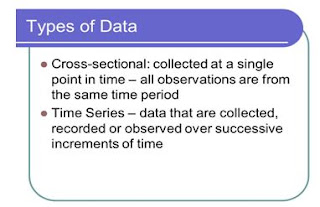Assignment help experts state that forecasting refers to finding an estimate for demand/ sales in future. There exist two major types of forecasting: Quantitative and Qualitative forecasting.
Quantitative forecasting methods are applied when:
1. There is availability of past numerical data
2. It is advisable to assume that the past trends shall continue in the future.
There are several methods that can be used for forecasting. Most commonly used methods use either cross-sectional data or time-series data.
Let’s take a look at what these methods are:
Cross-sectional Forecasting:
With the help of this kind of data, assignment experts aim at predicting a value that has not been observed, using information available from observed cases. Examples for those seeking help in economics assignment:
1. The price of houses sold in a given year in a specific area. We can predict the price of a house about which we do not have data by using its characteristics common to other houses like number of bedrooms etc.
2. The data regarding fuel economy of cars belonging to 2011 model. The carbon footprint value that we are unaware of, regarding a specific vehicle can be calculated using information about fuel efficiency and engine size.
Macroeconomics assignment help experts state that cross sectional models are put to use when there exists a relationship between dependent and independent variable. The dependent variable is the value to be forecasted and independent variable(s) is the predictor. A cross-sectional model identifies the relationship and forecasts values of the desired variable using the same. Change in predictor value leads to change in forecasted value.
Time-series Forecasting:
Time series data is the one that changes over changing periods of time. Some examples given in economics assignments are profits, stock prices, quarterly sales for companies, rainfall statistics per month etc.
Any value observed in a sequence over a time period forms a part of time series data. Time series could be regular i.e. daily, weekly, annually and so on or irregular i.e. spread across time unevenly.
Through time series forecasting, university assignment experts aim at determining the continuation of a sequence of events in the present to the future. The figure given below shows the Australian beer production, on a quarterly basis, from the year1992 up to the third quarter of 2008.
The blue lines are indicative of the forecasted production over next two years. The forecasts have understood the past patterns and replicated the same in order to give a similar trend over the next two years. The region that appears dark and shaded depicts 80% prediction intervals. This means that the probability of future values lying in the dark region is 0.8 or 80%. Similarly, the area shaded light depicts 95% prediction intervals. These intervals help in determining uncertainty in forecast. As per a principle of economics coursework, the more narrow the interval, the better the accuracy.Time series data utilizes the information available about the variable that needs to be forecasted and is not concerned with factors affecting and impacting its behavior.
Summary:
The article aims at throwing light on different types of forecasting methods for those seeking economics assignment help. There exist two major types of quantitative forecasting method which are cross-sectional forecasting and time-series forecasting. Cross sectional data is collected at one point of time while time series data is collected over a period of time. The two methods study past trends to make predictions about future figures.



